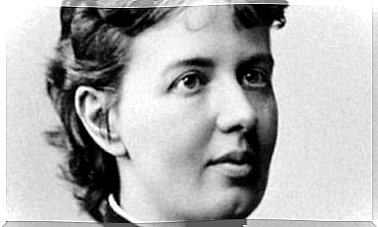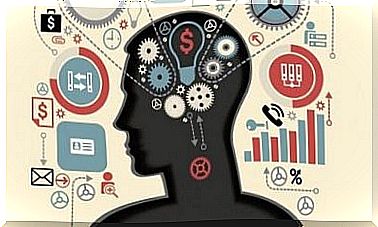Guilt, Shame And Pride – Self-conscious Emotions

Who hasn’t experienced shame after expressing an opinion or guilt after something we’ve done or pride after an achievement? Each of these examples corresponds to a series of emotions where there is an evaluation that relates to ourselves and which we know in psychology as ‘self-conscious emotions’.
These emotions are actually emotional states that share some common characteristics. But they also have specific characteristics, depending on how a person evaluates a certain behavior and what attribution they get. Let’s go deeper into it.
Guilt, shame and pride – self-conscious emotions

In recent years, people are all about emotions and we no longer ignore them. Just the opposite is the case. However, there is still much to learn about emotions.
While it is true that there are quite a few studies on basic emotions and emotional intelligence, there are no studies of greater variability and complexity. This is the case with self-conscious emotions.
Nevertheless, interest in these kinds of emotions increased. There are now also some theoretical models for this. According to these various studies, self-conscious emotions share many meaningful characteristics:
- Secondary emotions. This means that they arise from the transformation of more basic emotions.
- Complex emotions. These are necessary for the earlier development of certain cognitive skills, such as self-awareness. That is, there is a need for a difference between the self and others.
- Social emotions. These manifest themselves in interpersonal contexts.
- Moral emotions. These kinds of emotions are the result of the internalization of cultural values, norms, and criteria by which a person has determined what is right and what is not. We mean here in terms of behavior. Moreover, these are fundamental as motivational and controlling elements of moral behavior along with empathy.
Guilt and shame, for example, can get in the way of behavior that some consider immoral. Or they facilitate behavior that we consider moral, as you will feel ashamed and guilty if you do not pursue this behavior.
In addition, pride can be associated with good deeds and with the reinforcement that will result from similar actions in the future.
Another thing to keep in mind that is important is that despite the fact that these types of emotions are considered self-conscious emotions, the various authors who have examined them confirm that the self-evaluation that is performed does not have to be conscious or explicit.
Differential Aspects of Guilt, Shame, and Pride
Despite the characteristics that self-conscious emotions have in common, certain things also set them apart. Each of these emotions arises before a certain event and has a certain subjective experience. They also all involve a range of different behaviors.
Michael Lewis developed a model that explains inhibited emotions based on two variables:
- The positive or negative evaluation of one’s behavior.
- The internal attribution (global or specific) one can give in relation to such behavior.
According to the author, we evaluate our thoughts, feelings, and actions as successes or failures. according to both cultural and personal rules, norms and goals. According to these rules, we apply internal attributions. That is, we think about where they come from.
If you consider that success or failure is your own fault, the internal attribution would be global. If you consider that it is all due to a particular thought, action or feeling, then it would be specific. From there, some emotion arises.
Moreover, this whole process depends on both cultural influences and personal variables. For this reason, one person would view the same action as a failure while another would view it as a success.
The same goes for attributions, which can be global or specific, depending on the person. Below we explain the main characteristics of these types of emotions from the perspective of Lewis.
Guilt and shame, emotions with negative self-evaluations
When most of us experience shame, we evaluate our global selves negatively. We want to hide or disappear when we find ourselves fooling ourselves. So all we want in that moment is to run away from that discomfort.
We actually experience some mental confusion, but getting rid of that emotional state is not as simple as restoring a specific act. Therefore, we resort to mechanisms such as forgetting or reinterpreting what happened.
Likewise, guilt arises from a negative self-evaluation, but at a specific level. That is, through concrete action. We feel guilty for something we did, thought, or felt because we hurt someone.
In this case, however, we cannot undo the action, but guilt requires us to restore the action to get rid of the emotional state we are experiencing. It also includes a reflection of how we will act in the future.
Lewis views guilt as less destructive and more beneficial than shame, because of the implication of corrective action.
Pride and hubris, emotions with a positive self-evaluation

Pride comes from a positive evaluation of a character’s specific self. When we experience pride, we do it because we are satisfied with our own actions. Due to the fact that it is such a pleasant emotional state, we will probably want to reproduce it in the future.
Michael Lewis, in his explanatory model of self-conscious emotions, also referred to a personality setting, rather than an emotional response, to refer to an exaggerated pride: hubris.
This emotion has not yet been lexicalized in English and stems from a positive global assessment and is associated with narcissism in extreme cases.
When a person experiences hubris, it means he is very pleased with himself. Therefore, we will try to maintain that state, even if it is not easy. In addition, it is usually associated with a sense of superiority, and this leads to rejection by others.
Guilt, Shame and Pride: Conclusion
What do you think when you feel guilt, shame or pride? To what do you attribute that pride? And why do you experience guilt? Have you at some point in your life recognized the state of hubris in yourself?
As you can see, if there is anything that distinguishes self-conscious emotions, it is the developmental process associated with the evaluation of the self that characterizes these emotions. This is something you can check on a daily basis if you experience them.
However, there is still much to explore when it comes to these types of emotions, both on a personal and social level. For example, to what extent are pride and hubris usually positive emotions? And when do they become emotional states that have negative consequences?
While the universe of emotions is exciting, it is also complicated and even mysterious. This is because it is a subject with a large number of variables and characteristics.
Nevertheless, it is important to study it, because it facilitates the understanding of our essence. It is in fact another contribution to help complete the answer to one of the big questions: what are people like?









